There are a ton of programming languages out there, and choosing the best one for your project will help you avoid a ton of headaches later on. Some programming languages are suitable for front-end development, while others are best for back-end development.
This particular guide will dive deep into everything related to web development and the 15 best web development languages to use in 2025.
What is Web Development?
Web Development or Website Development refers to the tasks involved in designing, building and maintaining a website and web applications that run online on a web browser. It encompasses elements of web design and database management. It includes making use of diverse tools and frameworks to create websites and web apps that are – Responsive, Visually Attractive, & User-Friendly.
Types of Web Development?

Web Development comprises of three types –
- Frontend Development
- Backend Development
- Fullstack Development
Frontend Development focuses on the user-facing side or user interface. Everything that you see on your screen when visiting a website, i.e., the visual elements, falls under front-end development.
Backend Development, on the other hand, is the opposite of front-end development. It’s exclusively focused on the server side of web development. It is back-end development that ensures a website is running without any issues, managing server logic, APIs and more.
Fullstack Development simply combines frontend and backend development into one. A full-stack developer is someone who can design, develop, test and deploy a complete web application.
Now, let’s take a look at the best programming languages for website development that you should learn and use.
15 Programming Languages for Web Development in 2025
1. HTML

HTML (HyperText Markup Language) is the core of web development and the foundation for creating web pages. It serves as the backbone of every single website on the web. HTML’s main purpose is to dictate the structure and meaning of a website and its content. Simply put, HTML defines how an image, video, links, text and other contents must be displayed on a webpage.
Benefits of HTML for Web Development
- Easy to Learn & Use – HTML has a very simple syntax, making it beginner-friendly.
- Widely Supported – Works on all browsers and devices.
- Free & Open-Source – No licensing fees or restrictions.
- Lightweight – Doesn’t require a compiler; directly interpreted by browsers.
- SEO-Friendly – Proper HTML structuring improves search engine rankings.
- Works with Other Technologies – Integrates seamlessly with CSS, JavaScript, and backend languages.
- Customizable – Allows for dynamic content with JavaScript and frameworks.
- Responsive Design Support – Combined with CSS (media queries) for mobile-friendly layouts.
Drawbacks of HTML for Web Development
- Static by Nature – HTML cannot handle dynamic content alone. It needs JavaScript or a backend language to do that.
- Limited Functionality – Cannot perform logic, database interactions, or backend processing.
- Requires External Styling – If you want additional styling, you will have to use other languages. CSS, in particular, for design and JavaScript for interactivity.
- Not Secure – Pure HTML sites lack security features (e.g., authentication, encryption).
- Manual Coding for Large Projects – Maintaining large HTML files can be cumbersome.
- Browser Rendering Differences – Some tags and styles may behave differently across browsers.
Resources To Learn
- freeCodeCamp –
- CodeAcademy – Learn HTML
2. CSS

CSS (Cascading Style Sheet) is a stylesheet language used to describe the presentation of documents written in either HTML or XML. CSS controls how the elements on a webpage will be rendered on the screen and displayed to the viewer. While HTML is used for creating static organised content, CSS is how developers turn static content into a dynamic one and make it more visually appealing.
Benefits of CSS for Web Development
- Separation of Content and Design – Keeps HTML clean and improves maintainability.
- Improves Website Performance – Reduces page load times by minimising repeated styling.
- Responsive Design – Enables mobile-friendly layouts using media queries.
- Consistency Across Pages – A single CSS file can style multiple pages for a uniform look.
- Flexibility & Customization – Supports animations, transitions, and dynamic effects.
- Cross-Browser Compatibility – Works on all modern browsers when properly implemented.
- Easy Maintenance – Changes in one CSS file reflect across multiple pages.
- Supports Frameworks – Works well with Bootstrap, Tailwind CSS, and other UI frameworks.
Drawbacks of CSS for Web Development
- Cross-Browser Issues – Some styles render differently in different browsers.
- Complexity in Large Projects – Managing multiple stylesheets can get overwhelming.
- Lack of Built-in Logic – CSS lacks conditionals or loops, requiring preprocessors like SASS/LESS.
- Steep Learning Curve for Advanced Features – Grid, Flexbox, and animations require in-depth knowledge.
- Overriding Styles Can Be Challenging – Higher specificity and inline styles may cause conflicts.
- No Security Features – Vulnerable to CSS-based attacks like clickjacking if misused.
- Dependency on External Files – CSS files need to load correctly for the website to display properly.
Resources To Learn
- freeCodeCamp –
- CodeAcademy – Learn CSS
3. Javascript

JS or Javascript is an open-source interpreted or just-in-time compiled programming language designed for adding and managing dynamic interactions for websites. Besides being primarily used as a scripting language for web pages, Javascript is also used in other areas, such as applications, servers, and video games. Javascript, HTML and CSS work concurrently and are the cornerstone of modern web development.
Benefits of Javascript for Web Development
- Client-Side Execution – Runs directly in the browser, reducing server load.
- Fast Performance – Executes quickly without needing to contact the server.
- Versatile & Full-Stack – Works on frontend (React, Vue, Angular) and backend (Node.js).
- Rich Ecosystem & Libraries – Vast frameworks like React, Express, and jQuery enhance development.
- Asynchronous Processing – Supports AJAX, Promises, and async/await for non-blocking execution.
- Interactivity & UI Enhancement – Enables animations, real-time updates, and dynamic content.
- Cross-Platform Compatibility – Works on browsers, mobile apps (React Native), and servers (Node.js).
- Large Community & Support – Extensive documentation, tutorials, and open-source contributions.
Drawbacks of Javascript for Web Development
- Security Risks – Vulnerable to cross-site scripting (XSS) and injection attacks if not handled properly.
- Browser Compatibility Issues – Different browsers may interpret JavaScript differently.
- Debugging Can Be Difficult – Loose typing can cause unexpected errors.
- Performance Limitations – Slower than compiled languages like C++ or Rust for intensive computations.
- Heavy Dependency on Frameworks – Modern development often relies on libraries (React, Vue, etc.), adding complexity.
- Code Can Be Easily Exploited – Since JavaScript is client-side, malicious users can inspect and modify it.
- Global Variable Pollution – Poorly written code can cause conflicts between scripts.
Resources To Learn
- freeCodeCamp –
- CodeAcademy – Introduction To Javascript
4. Python
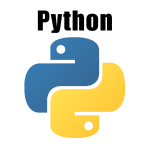
Python is a general-purpose programming language for website development that is immensely popular for its easy-to-learn syntax and wide application in diverse fields like machine learning (ML), data science, software development, and artificial intelligence. Python is also quite popular in web development and is frequently used to build server-side web applications. It also provides a lot of highly useful frameworks and libraries like Django, CherryPy, Tornade, Bottle, Flask, Pyramid and more, which help simplify the development processes.
Benefits of Python for Web Development
- Easy to Learn and Use – Simple syntax makes development accessible for beginners and professionals.
- Extensive Libraries and Frameworks – Django, Flask, and FastAPI streamline web development.
- Strong Community Support – Large developer base ensures quick solutions and frequent updates.
- Scalable and Flexible – Suitable for both small projects and enterprise-level applications.
- Cross-Platform Compatibility – Works seamlessly on Windows, macOS, and Linux.
- Efficient for Backend Development – Supports databases, authentication, and API development.
- Good for Data-Driven Applications – Strong integration with AI, machine learning, and analytics tools.
- Built-in Security Features – Django provides protection against SQL injection and XSS attacks.
- Fast Development Cycle – Allows rapid prototyping and faster deployment.
- Integration with Other Technologies – Easily connects with Java, C++, cloud services, and APIs.
Drawbacks of Python for Web Development
- Frequent Updates and Compatibility Issues – New versions may break older libraries and dependencies.
- Slower Execution Speed – The interpreted nature makes it slower than C++ or Java.
- High Memory Usage – Not ideal for memory-intensive applications.
- Limited for Mobile and Frontend Development – Primarily used for backend, lacks native frontend support.
- Threading Limitations – Global Interpreter Lock (GIL) restricts true multi-threading.
- Asynchronous Support Requires Extra Effort – Libraries like asyncio are needed for async tasks.
- Overhead for Small Projects – Django and Flask can be excessive for simple applications.
Resources To Learn
- freeCodeCamp –
- LearnPython – Learn Python
5. PHP

PHP is another popular scripting language for building server-side web applications. It’s also used regularly for creating complex and interactive websites. PHP is an open-source interpreted language, meaning there’s no need for compilation. Furthermore, since PHP code is executed on the server side, it allows for the generation of dynamic content for websites.
Benefits of PHP for Web Development
- Widely Used and Well-Established – Powers a large percentage of websites, including WordPress.
- Easy to Learn and Use – Simple syntax makes development faster for beginners.
- Excellent Performance for Web Applications – Optimized for handling web requests and server-side execution.
- Large Community Support – Extensive documentation and active developer forums.
- Strong Framework Ecosystem – Laravel, CodeIgniter, and Symfony simplify development.
- Built-in Database Support – Works seamlessly with MySQL, PostgreSQL, and SQLite.
- Cross-Platform Compatibility – Runs on Windows, Linux, and macOS.
- Wide Hosting Availability – Supported by most web hosting providers, including shared hosting.
- Great for Server-Side Scripting – Designed specifically for web development, making backend logic efficient.
- Secure When Properly Configured – Offers built-in features to prevent SQL injection and XSS attacks.
Drawbacks of PHP for Web Development
- Declining Popularity for New Projects – While still widely used, newer technologies like Node.js and Python are gaining more adoption.
- Security Vulnerabilities – Poorly written PHP code can be prone to SQL injection and XSS attacks.
- Not Ideal for Large-Scale Applications – Can be harder to maintain for enterprise-level projects compared to Java or C#.
- Inconsistent Syntax – Legacy code and newer PHP versions can have different syntax structures.
- Slower Execution Speed – Interpreted nature makes it slower than compiled languages like C++ or Java.
- Global Variable Usage – Older PHP versions encourage bad coding practices with global variables.
- Less Modern Compared to Newer Languages – Lacks some modern programming features found in Python or Node.js.
- Weak Asynchronous Support – Not as efficient as Node.js for real-time applications.
- Can Be Difficult to Debug – Error handling is not as intuitive as in some other languages.
- Code Maintenance Challenges – Spaghetti code is common in older PHP projects due to its flexibility.
Resources To Learn
- freeCodeCamp –
- Learn-PHP.org – Learn Python
6. Ruby

Ruby is an open-source interpreted programming language created by Yukihiro “Matz” Matsumoto sometime in the mid-1990s. The official Ruby website writes this about it – “Ruby is a language of careful balance.”
Ruby is a server-side scripting language similar to Python. It is also a dynamically typed and object-oriented programming language with a robust system of exceptions and error handling. As a general-purpose language, it is used in many fields, including web development. Its popularity can also be attributed to the popular web framework – Ruby on Rails- used for backend web and app development.
Benefits of Using Ruby for Web Development
- Rapid Development – Ruby on Rails (RoR) framework speeds up development with built-in tools.
- Concise and Readable Syntax – Clean, human-friendly code improves maintainability.
- Convention Over Configuration – Reduces setup time by following best practices by default.
- Large Ecosystem – Rich libraries (gems) simplify adding features like authentication and payments.
- Scalability – Supports high-traffic applications like Shopify, GitHub, and Airbnb.
- Strong Community Support – Active developers contribute updates, security patches, and plugins.
- Built-in Security Features – Rails includes protection against SQL injection, XSS, and CSRF attacks.
- Cross-Platform Compatibility – Runs on Linux, macOS, and Windows with minimal setup.
- Great for MVPs and Startups – Ideal for building prototypes and launching new products quickly.
- Automated Testing – Built-in testing frameworks help maintain code quality.
Drawbacks of Using Ruby for Web Development
- Frequent Version Updates – Some gems may become outdated or unsupported with newer Ruby versions.
- Slower Performance – Interpreted nature makes it slower than compiled languages like Go or Java.
- High Memory Usage – Can consume more resources compared to PHP or Python.
- Less Efficient for Real-Time Applications – Not ideal for WebSockets or event-driven architectures like Node.js.
- Steeper Learning Curve – Convention-based development may be confusing for beginners.
- Scaling Challenges – Requires proper optimizations to scale efficiently in high-traffic environments.
- Dependency on Gems – Heavy reliance on third-party libraries can cause compatibility issues.
Resources To Learn
- freeCodeCamp –
- freeCodeCamp (Ruby on Rails) –
- Ruby-Lang.org – Ruby Documentation
7. Golang

Go or GoLang is a newer programming language, first appearing in 2007. Designed by Google, it is known for its Concurrency support and built-in garbage collection. Go authors specifically designed it to be efficient and easy to learn. Thanks to Google’s backing and inherent simplicity, GoLang is now used to build modern high-performance web applications, scalable network servers, large-scale distributed systems, and more.
Benefits of Using Go for Web Development
- High Performance – Compiles to native machine code, making it faster than interpreted languages like Python and PHP.
- Lightweight and Efficient – Uses minimal memory and CPU resources, ideal for high-performance web applications.
- Built-in Concurrency – Goroutines allow efficient handling of multiple requests simultaneously.
- Simple and Readable Syntax – Easy to learn and write, reducing development time.
- Scalability – Well-suited for microservices and large-scale web applications.
- Cross-Platform Compatibility – Runs on Windows, Linux, and macOS without modification.
- Strong Standard Library – Includes built-in support for HTTP servers, JSON parsing, and database connections.
- Static Typing and Safety – Reduces runtime errors and improves application stability.
- Fast Compilation – Quickly compiles code, speeding up development cycles.
- Growing Ecosystem – Increasing adoption in web development, cloud services, and DevOps.
Drawbacks of Using Go for Web Development
- Requires More Manual Work – Some built-in features in other languages (like ORM support) require external libraries in Go.
- Verbose Error Handling – Requires explicit error handling, which can increase code complexity.
- Less Flexibility in Development – Lacks some high-level features found in Python or Ruby.
- No Generics (Until Go 1.18) – Older versions required repetitive code due to the lack of generics.
- Smaller Developer Community – Fewer web development resources and support compared to JavaScript or PHP.
- Basic Dependency Management – Lacks advanced package management features found in Node.js or Java.
Resources To Learn
- freeCodeCamp –
- freeCodeCamp –
8. Java
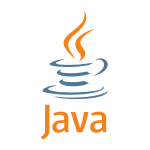
Java is a highly popular object-oriented programming language currently owned by Oracle. It’s consistently among the top most-used languages and is the backbone for many back-end architectures. In web development, Java is primarily used for the server side. Java’s wide use and immense popularity stems from its platform independence feature, object-oriented design and built-in security features.
Benefits of Using Java for Web Development
- Platform Independence – “Write once, run anywhere” capability due to JVM (Java Virtual Machine).
- High Performance – Just-In-Time (JIT) compilation optimizes execution speed.
- Scalability – Well-suited for enterprise applications and large-scale web services.
- Robust Security – Built-in security features like authentication, encryption, and access control.
- Strong Backend Frameworks – Spring Boot, Hibernate, and Jakarta EE simplify web development.
- Multi-Threading Support – Handles concurrent requests efficiently for high-traffic applications.
- Wide Database Support – Integrates seamlessly with MySQL, PostgreSQL, Oracle, and MongoDB.
- Strong Community Support – Extensive documentation, forums, and libraries available.
- Microservices-Friendly – Well-suited for microservices architecture with frameworks like Spring Boot.
- Enterprise Adoption – Used by large organizations for banking, e-commerce, and cloud applications.
Drawbacks of Using Java for Web Development
- Requires Additional Tools for Modern Web Apps – Needs frameworks and libraries to compete with modern web development stacks.
- Slower Development Speed – More verbose syntax compared to Python or JavaScript.
- High Memory Usage – Requires more system resources than lightweight languages like Node.js.
- Steep Learning Curve – Object-oriented principles and frameworks require time to master.
- Longer Startup Times – JVM-based applications take longer to initialize compared to compiled languages like Go.
- Hosting and Deployment Complexity – Requires specialized hosting environments, unlike PHP or Python.
- Limited for Frontend Development – Primarily used for backend; JavaScript dominates frontend development.
- Complex Configuration – Setting up Java frameworks like Spring can be time-consuming.
Resources To Learn
- freeCodeCamp –
- freeCodeCamp – Java Basics – Crash Course
9. Swift
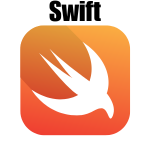
Just like Golang, Swift, too, is a new programming language. Introduced back in 2014 by Apple, it’s a general-purpose block-structured language designed to work seamlessly across all Apple platforms. Swift is made with efficiency and easy implementation in mind, which has helped it greatly in being embraced by developers.
Benefits of Using Swift for Web Development
- High Performance – Compiles to optimized machine code, making web applications fast and efficient.
- Memory Safety – Prevents memory leaks and security vulnerabilities with built-in safety features.
- Readable and Concise Syntax – Easier to write and maintain compared to Objective-C.
- Full-Stack Development with Vapor – Vapor framework enables backend web development using Swift.
- Strong Type System – Reduces runtime errors and enhances code reliability.
- Cross-Platform Compatibility – Can run on Linux servers, allowing deployment beyond macOS.
- Integration with Apple Ecosystem – Works seamlessly with iOS applications and macOS services.
- Modern and Actively Supported – Regular updates and improvements backed by Apple.
- Asynchronous Programming Support – Swift’s concurrency model allows efficient web request handling.
- Security Features – Built-in protection against common vulnerabilities like buffer overflows.
Drawbacks of Using Swift for Web Development
- Frequent Language Updates – Changes in Swift versions may cause compatibility issues with older projects.
- Limited Web Development Ecosystem – Fewer libraries and frameworks compared to JavaScript or Python.
- Smaller Community Support – Fewer web developers use Swift, leading to limited resources and tutorials.
- Steep Learning Curve for Non-iOS Developers – Primarily designed for Apple environments, making it harder for new web developers.
- Less Industry Adoption – Swift is mainly used for iOS development, not web applications.
- Framework Dependency – Vapor is the most popular Swift web framework, but it lacks the maturity of Django or Express.js.
- Slow Compilation Time – Swift apps can take longer to compile than JavaScript or PHP applications.
- Limited Support for Frontend Development – No built-in tools for frontend development, requiring JavaScript for UI.
Resources To Learn
- freeCodeCamp –
- Official Documentation – A Swift Tour | Documentation
10. Kotlin
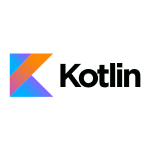
Designed and developed by JetBrains, Kotlin is a general-purpose, high-level programming language known for its compatibility with Java. This allows Kotlin developers to utilise Java frameworks, resources and libraries in Kotlin applications. Kotlin is a cross-platform language that is widely used in Android app development. It is particularly popular in web development with frameworks like Spring Boot and Ktor.
Benefits of Kotlin for Web Development
- Full-Stack Development Support – Can be used for both backend (Ktor, Spring Boot) and frontend (Kotlin/JS).
- Interoperability with Java – Easily integrates with existing Java-based web applications.
- Concise and Readable Syntax – Reduces boilerplate code, improving development speed.
- Strong Type System – Minimizes runtime errors and enhances code safety.
- Asynchronous and Reactive Programming – Supports coroutines for efficient non-blocking operations.
- Cross-Platform Compatibility – Works with JVM, JavaScript, and Native for multi-platform development.
- Modern Web Frameworks – Ktor provides lightweight, asynchronous web development.
- Better Null Safety – Built-in protection against null pointer exceptions.
- Secure and Reliable – Reduces vulnerabilities through strict type checking and immutability.
- Growing Adoption and Community Support – Increasingly used in enterprise applications and backend services.
Drawbacks of Kotlin for Web Development
- Integration Issues with Some Legacy Systems – While interoperable with Java, some older enterprise applications may require modifications.
- Slower Compilation Speed – Compilation can be slower compared to Java in some cases.
- Smaller Developer Community – Fewer Kotlin web developers compared to Java or JavaScript.
- Not as Popular for Frontend Development – Kotlin/JS is not as mature as JavaScript frameworks.
- Learning Curve for Java Developers – While similar to Java, some concepts like coroutines require adjustment.
- Limited Adoption in Startups – More commonly used in Android and enterprise applications rather than small web projects.
- Less Industry Demand – Java and JavaScript still dominate web development job markets.
- Overhead for Small Projects – Using Kotlin with frameworks like Spring Boot may be excessive for simple applications.
Resources To Learn
- freeCodeCamp –
- Official Documentation – Get started with Kotlin
11. C#
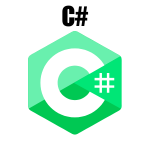
C# is a general-purpose object-oriented programming language developed and maintained by Microsoft. C# runs on the .NET framework and, as a result, comes packed with features like fast execution, memory management, and cross-platform support. Its versatility and dedicated support from Microsoft have turned it into a prominent programming language with various use cases ranging from database application and game development to web development and services.
Benefits of C# for Web Development
- High Performance – Optimized execution with Just-In-Time (JIT) compilation and Ahead-Of-Time (AOT) support.
- Cross-Platform Development – .NET Core allows applications to run on Windows, Linux, and macOS.
- Strongly Typed and Object-Oriented – Reduces runtime errors and enhances maintainability.
- Rich Ecosystem and Libraries – .NET provides extensive built-in tools and frameworks for web development.
- Scalable and Reliable – Suitable for enterprise applications and high-traffic web services.
- Efficient Asynchronous Programming – Async/await support for non-blocking operations.
- Built-in Security Features – Offers authentication, authorization, and data protection.
- Integration with Microsoft Services – Works seamlessly with Azure, SQL Server, and Windows Server.
- Web API and Microservices Support – ASP.NET Core enables modern API and microservices development.
- Large Developer Community – Extensive documentation and active forums for support.
Drawbacks of C# for Web Development
- Higher Hosting Costs – Windows-based hosting can be more expensive than Linux alternatives.
- Steeper Learning Curve – Requires familiarity with C# and .NET-specific concepts.
- Slower Startup Time – Initial load times can be higher than some compiled languages.
- Frequent Version Updates – Regular updates may require code modifications for compatibility.
- Complex Deployment Process – Requires additional configuration for cloud and containerized environments.
- Not Ideal for Small Projects – Overhead may be excessive for simple websites.
- Dependency on Microsoft Ecosystem – Best suited for businesses already using Microsoft tools.
Resources To Learn
- freeCodeCamp –
- freeCodeCamp –
12. Rust

Rust is a fast and memory-efficient programming language used on the back-end side of web development. It is highly secure and is well known for preventing memory-related errors without affecting performance. With Rust, developers can build high-performance and secure web applications.
Benefits of Rust for Web Development
- High Performance – Compiled to machine code, making it faster than interpreted languages like Python or JavaScript.
- Memory Safety – Eliminates memory leaks and null pointer exceptions without a garbage collector.
- Concurrency Support – Built-in features for safe and efficient multi-threading.
- Strong Type System – Reduces runtime errors and improves code reliability.
- WebAssembly (Wasm) Compatibility – Allows running high-performance Rust code in the browser.
- Scalability – Well-suited for building high-traffic, data-intensive web applications.
- Security Features – Prevents buffer overflows and other memory-related vulnerabilities.
- Backend Frameworks – Rocket, Actix, and Axum provide efficient web development solutions.
- Minimal Runtime Overhead – More predictable performance compared to languages with garbage collection.
- Growing Ecosystem – Increasing support for web frameworks, cloud services, and database integrations.
Drawbacks of Rust for Web Development
- Requires More Boilerplate Code – Can be verbose compared to high-level languages like Python or JavaScript.
- Slower Development Speed – Writing and debugging Rust code takes longer due to strict rules.
- Smaller Ecosystem and Libraries – Fewer third-party libraries compared to Node.js or Django.
- Limited Full-Stack Support – Rust is strong for backend and WebAssembly but lacks frontend frameworks.
- Hosting and Deployment Complexity – Requires specialized hosting environments for optimal performance.
- Compilation Overhead – Slower compile times compared to dynamically typed languages.
- Less Community Support for Web – Fewer web-specific tutorials and learning resources.
- Not Ideal for Rapid Prototyping – Better suited for performance-critical applications than quick MVPs.
Resources To Learn
- freeCodeCamp –
- Rust-Lang.org – Learn Rust – Rust Programming Language
13. Dart

Dart is yet another language developed by Google. It’s an object-oriented, general-purpose programming language that supports application development for browsers and servers. Dart is mostly used to develop applications using the Flutter framework. However, it has also been used in web development, especially in front-end development, as it can be compiled into Javascript.
Benefits of Dart for Web Development
- Fast Performance – Compiles to optimized JavaScript for efficient execution in browsers.
- Full-Stack Development – Can be used for both frontend (Flutter Web) and backend (Shelf, Aqueduct).
- Hot Reload Support – Enables real-time updates, speeding up development.
- Object-Oriented and Type-Safe – Strong typing reduces runtime errors and improves maintainability.
- Flutter Web Integration – Allows cross-platform development for web, mobile, and desktop with a single codebase.
- Efficient Asynchronous Programming – Built-in support for async/await and isolates.
- Rich Developer Tooling – Works seamlessly with VS Code, IntelliJ IDEA, and Android Studio.
- Strong Google Backing – Regular updates and a growing ecosystem.
- SEO Support with AngularDart – Allows server-side rendering for better search engine visibility.
- Good for UI-Intensive Applications – Flutter Web offers rich UI components for highly interactive web apps.
Drawbacks of Dart for Web Development
- Limited Adoption – Fewer developers and community resources compared to JavaScript or Python.
- Small Ecosystem – Fewer third-party libraries and frameworks for web development.
- Not a Default Choice for Web – JavaScript frameworks like React, Angular, and Vue dominate the industry.
- Compilation Overhead – Requires compilation to JavaScript, adding an extra step in development.
- Flutter Web is Still Maturing – Not as stable or widely used as Flutter for mobile.
- Limited Backend Support – Fewer backend frameworks like Shelf and Aqueduct compared to Node.js or Django.
- SEO Challenges with Flutter Web – Canvas-based rendering may cause indexing issues.
- Fewer Hosting Options – Not as widely supported as PHP or Node.js for web hosting.
- Longer Initial Load Times – Flutter Web applications tend to have larger bundle sizes, affecting performance.
- Less Industry Demand – Finding jobs or projects in Dart web development can be more challenging.
Resources To Learn
- freeCodeCamp –
- Dart.dev – Tutorials | Dart
14. .NET
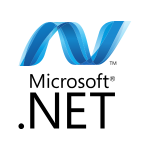
Developed by Microsoft, the .NET framework is a free and open-source developer platform used in developing applications for web, mobile, cloud services, and mobile. In web development, .NET makes use of the ASP.NET framework, which is specifically designed to build secure and dynamic web apps, websites, and services.
Benefits of .NET for Web Development
- High Performance – Optimized execution with Just-In-Time (JIT) and Ahead-Of-Time (AOT) compilation.
- Cross-Platform Compatibility – .NET Core allows development on Windows, Linux, and macOS.
- Robust Security Features – Built-in authentication, authorization, and data protection mechanisms.
- Scalability and Reliability – Suitable for enterprise applications and high-traffic websites.
- Full-Stack Development Support – Can be used for backend (C#) and frontend (Blazor).
- Rich Library and Framework Ecosystem – Extensive libraries for web, cloud, AI, and database integration.
- Strong Integration with Microsoft Services – Works seamlessly with Azure, SQL Server, and Windows Server.
- Efficient Asynchronous Programming – Supports async/await for non-blocking operations.
- Microservices and Cloud Readiness – Ideal for building scalable cloud-based and microservices applications.
- Large Developer Community and Enterprise Support – Backed by Microsoft with active contributions.
Drawbacks of .NET for Web Development
- Not as Lightweight as Other Alternatives – Node.js or Golang may be better for resource-constrained environments.
- Higher Hosting and Licensing Costs – Windows-based hosting can be expensive compared to Linux alternatives.
- Steeper Learning Curve – Requires familiarity with C# and .NET-specific concepts.
- Larger Memory Footprint – .NET applications tend to use more system resources compared to lightweight alternatives like Node.js.
- Slower Startup Time – Initial load times can be higher compared to some compiled languages.
- Frequent Version Updates – New .NET versions require updates to keep applications compatible.
- Complex Deployment Process – Requires additional configuration for cloud and containerized environments.
- Limited Adoption in Startups – More commonly used in large enterprises rather than fast-moving startups.
- Dependency on Microsoft Ecosystem – Best suited for businesses already using Microsoft tools.
Resources To Learn
- freeCodeCamp –
- freeCodeCamp –
- Microsoft – Learning Center | .NET
15. Perl
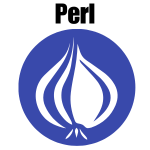
Perl is a general-purpose, interpreted programming language designed and developed by Larry Wall. Over the years, web developers have started opting for other languages. However, It’s still quite a popular choice for web development thanks to its versatility and powerful text processing capabilities.
Benefits of Perl for Web Development
- Strong Text Processing Capabilities – Excellent for handling and manipulating large text data.
- Cross-Platform Compatibility – Runs on Windows, Linux, and macOS with minimal modifications.
- CGI and Web Framework Support – Supports Mojolicious, Catalyst, and Dancer for modern web applications.
- Efficient for Backend Scripting – Well-suited for automation, database handling, and API integration.
- Extensive Library Support – CPAN (Comprehensive Perl Archive Network) provides thousands of reusable modules.
- Integration with Other Languages – Works well with C, C++, and shell scripts for extended functionality.
- Regular Expression Powerhouse – Superior built-in regex capabilities for pattern matching and data parsing.
- Stable and Well-Tested – Mature language with a long history in web development.
- Database Connectivity – Supports MySQL, PostgreSQL, Oracle, and NoSQL databases through DBI.
- Secure When Configured Properly – Can be made secure with good coding practices and proper configurations.
Drawbacks of Perl for Web Development
- Declining Popularity – Losing ground to modern web languages like Python, PHP, and JavaScript.
- Complex and Unreadable Syntax – Code can be difficult to read and maintain, especially in large projects.
- Slower Execution Speed – Interpreted nature makes it slower than compiled languages like C++ or Java.
- Limited Modern Web Frameworks – Fewer dedicated web development frameworks compared to Python or PHP.
- CGI Performance Limitations – Traditional CGI scripts can be slow and inefficient compared to modern frameworks.
- Smaller Developer Community – Harder to find Perl developers compared to JavaScript or Python.
- Steeper Learning Curve – Perl’s syntax and multiple ways to do the same thing can be confusing for beginners.
- Weak Asynchronous Programming Support – Lacks built-in async features like Node.js for real-time applications.
- Limited Hosting Support – Not as widely supported on web hosting platforms as PHP or Python.
- Better Alternatives Exist – Languages like Python, PHP, and Node.js offer simpler, more efficient, and better-supported web frameworks.
Resources To Learn
- Learn Perl – Learn Perl
Difference Between Web Development & Web Design
Some tend to confuse web design with web development. Web Design, in general, refers to a website’s visuals and its components. Everything from the colour scheme, design pattern, information flow, and UI/UX comes under web design. Web development, on the other hand, covers the background aspects of a website, such as coding and tech implementation. In general, there’s usually a lot of overlap between the two. However, there are also some major differences between web development and web design.
| Web Development | Web Design |
| Focused on the coding and function of a website. | Concerned with the visual aspects, typography, and user-experience of a website. |
| Ensures website interactivity, responsiveness, and backend integration. | Enhances usability, branding, and user experience. |
| Tools & Frameworks: Web Developer, Backend Developer, Frontend Developer, Full-Stack Developer. | Tools & Frameworks: Figma, Adobe Illustrator, Adobe XD, Sketch, Canva. |
How to Choose the Best Language for Web Development in 2025?
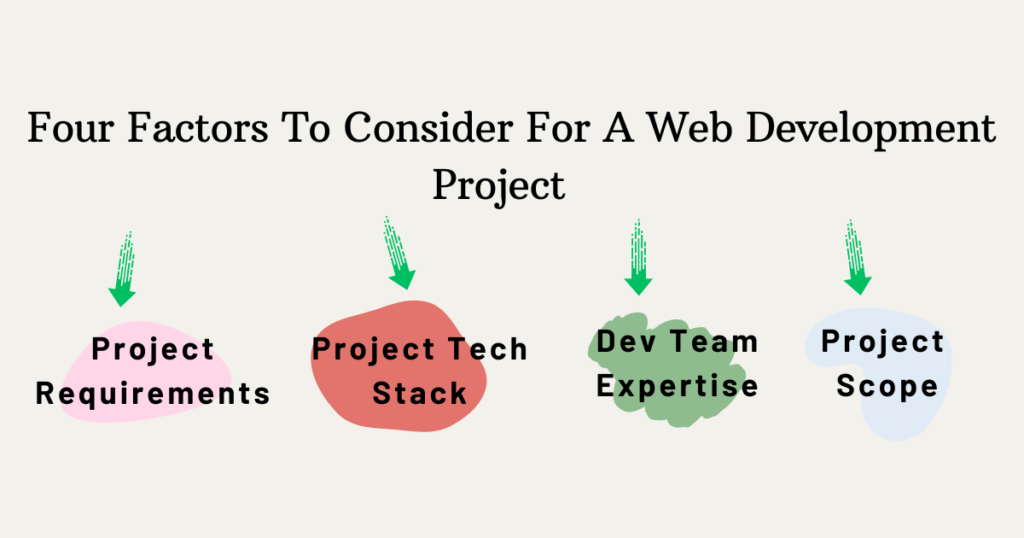
To choose the best language for web development in 2025, you need to take a look at the following factors:
- Project Requirements
- Project Scope
- Project Tech Stack
- Dev Team Expertise
Once you have thoroughly analysed these four factors, you will be easily able to choose the best programming language that suits your project.
In front-end development, the usual choice is – HTML, CSS and Javascript. Meanwhile, for the back end, developers primarily use Java, Python, Javascript (with Node.js), or PHP. In the end, everything depends upon the four factors mentioned above.
As a web development company, we at Dectox choose the most suitable programming language for web development by analysing our client’s needs and conducting thorough research of their competitors. By understanding their business goals and requirements, we are able to offer a personalized digital solution for them and build a website that’s responsive, user-friendly, and visually attractive.
Read more: Shopify Development & Optimization
